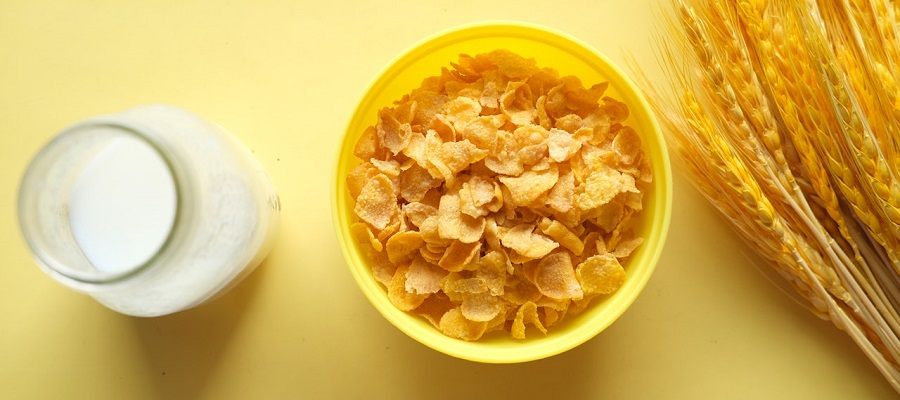In terms of nutrition, there are some differences between powdered milk and regular milk. Powdered milk is made by removing the water from regular milk, resulting in a dry, shelf-stable product. When reconstituted with water, powdered milk can be used as a substitute for regular milk in recipes or as a standalone drink.
One advantage of powdered milk is that it has a longer shelf life than regular milk and does not need to be refrigerated until it is reconstituted. This can be convenient for those who do not have access to a reliable source of fresh milk or for those who want to have a non-perishable milk alternative on hand.
In terms of nutrition, powdered milk is generally similar to regular milk, but there may be some differences depending on the specific brand and type of milk used to make the powder. In general, both types of milk are a good source of protein, calcium, and other essential nutrients. However, some brands of powdered milk may contain added sugars and other ingredients, so it is important to read the label and choose a brand that aligns with your dietary preferences.
It is generally recommended to choose fresh milk over powdered milk when possible, as it may have a more natural flavor and a higher content of certain nutrients such as vitamin C. However, powdered milk can be a convenient and nutritious alternative in certain situations. It is important to choose a brand that is made with high-quality ingredients and to consume milk and milk products as part of a healthy, balanced diet.
Popular types of milk powder
There are many brands of milk powder available on the market, and the most popular types may vary depending on the region and consumer preferences. Some of the most well-known brands of milk powder include:
-
Nestle Nido: Nido is a brand of milk powder that is made with whole milk and is available in various forms, including a powder that can be reconstituted with water and a ready-to-drink version. It is a popular choice in Latin America and other parts of the world.
-
Anlene: Anlene is a brand of milk powder that is made with a blend of cow's milk and goat's milk and is enriched with bone-building nutrients such as calcium and vitamin D. It is a popular choice in Asia and other parts of the world.
-
Nespray: Nespray is a brand of milk powder that is made with whole milk and is available in various forms, including a powder that can be reconstituted with water and a ready-to-drink version. It is a popular choice in the Middle East and other parts of the world.
-
Peak: Peak is a brand of milk powder that is made with whole milk and is available in various forms, including a powder that can be reconstituted with water and a ready-to-drink version. It is a popular choice in Africa and other parts of the world.
These are just a few examples of the many brands of milk powder available on the market. It is important to read the label and ingredients list of any milk powder to understand its nutritional content and to choose a brand that aligns with your dietary preferences.
Which is better for the health of the baby
For infants and young children, it is generally recommended to use fresh cow's milk or a commercial infant formula as a primary source of nutrition. These options provide the nutrients that young children need for proper growth and development.
Powdered milk is not typically recommended as a primary source of nutrition for infants and young children, as it may not provide all the nutrients that they need in the right amounts. In addition, reconstituting powdered milk with water can be challenging and may result in an incorrect ratio of water to powder, which can affect the nutritional content of the finished product.
If you are considering using powdered milk for your baby, it is important to consult with a healthcare professional or a registered dietitian to ensure that your baby is getting all the nutrients they need for proper growth and development. They can help you determine the appropriate amount of powdered milk to use and can provide guidance on how to properly reconstitute it.
It is generally recommended to use fresh cow's milk or a commercial infant formula as the primary source of nutrition for infants and young children. If you are considering using powdered milk, it is important to consult with a healthcare professional or a registered dietitian to ensure that your child is getting all the nutrients they need.
The use of powdered milk in desserts
Powdered milk can be used as an ingredient in a variety of desserts, including cakes, cookies, ice cream, and other sweet treats. It can be used to add a creamy, milk flavor to recipes or to add protein and other nutrients.
To use powdered milk in a recipe, you will need to reconstitute it with water according to the package instructions. The reconstituted milk can then be used as a substitute for fresh milk in the recipe. It is important to note that reconstituted powdered milk may not have the same texture or flavor as fresh milk, so the finished dessert may be slightly different than if you had used fresh milk.
Here are a few ideas for using powdered milk in desserts:
-
Milk Powder Ice Cream: You can use reconstituted powdered milk as the base for homemade ice cream, or you can add a spoonful of powdered milk to a store-bought ice cream base to give it a richer, creamier flavor.
-
Milk Powder Fondant: You can use reconstituted powdered milk to make a smooth, creamy fondant for cakes and other desserts.
-
Milk Powder Panna Cotta: You can use reconstituted powdered milk to make a rich, creamy panna cotta dessert.
-
Milk Powder Cookies: You can use reconstituted powdered milk as an ingredient in cookie recipes to give the cookies a softer, more tender texture.
These are just a few ideas for using powdered milk in desserts. It is important to note that powdered milk contains added sugars and other ingredients, so it should be consumed in moderation as part of a healthy, balanced diet.


